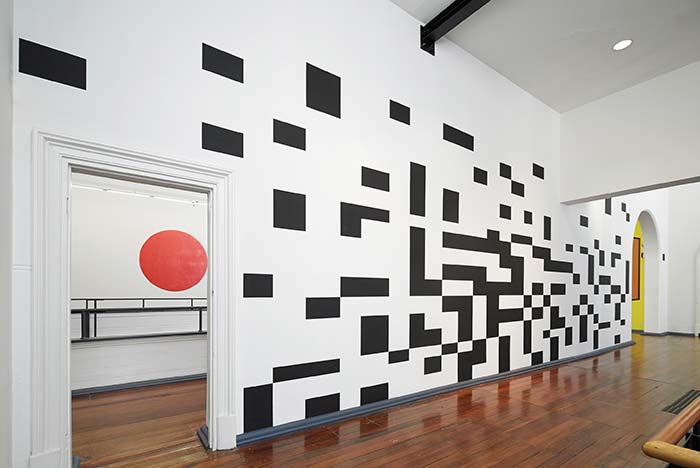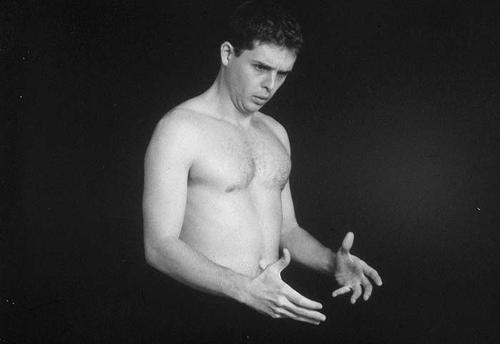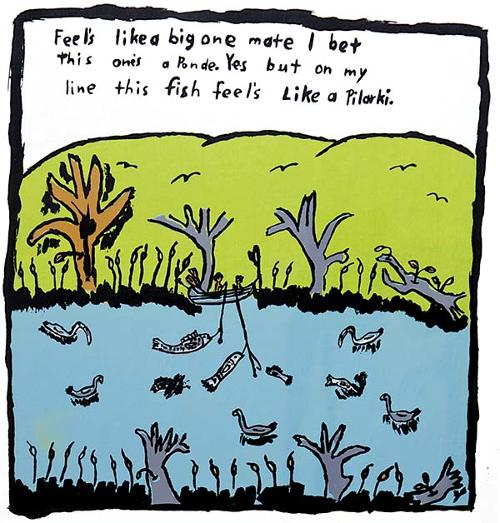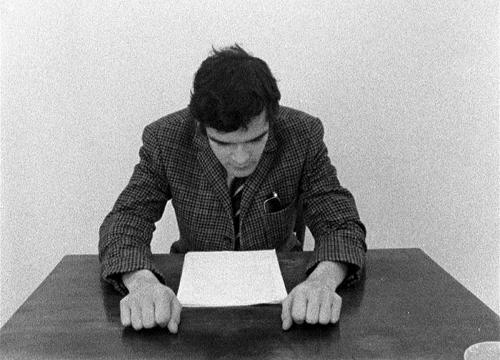
In One Place After Another the Australian Centre for Concrete Art (AC4CA) - twelve Australian and international artists – have responded to the PICA upper gallery spaces with site-specific paintings. Each artwork allows plenty of room for interpretation and analysis if you choose to dig beyond the surface but the efficacy of the paintings lies in their apparent simplicity, energy and reductive intensity.
Since its conception in WA in 2002, AC4CA has been leading a global conversation with artists across generations. Underpinning the philosophy of the group are the ideals of De Stijl artist Theo van Doesburg who coined the term Concrete Art in the early part of the 20th century. As Julian Goddard, the group's founder, writes in the catalogue essay, this is painting loaded with the 'silence of intention’, rejecting the need to explain itself, ‘relying on only its presence to produce experience’. It is what it is, and that’s all.
While the paintings do not have a message they are far from impassive, detached or void of content. Not reliant on storytelling or interpreting the world, each is contingent on its relationship to the physical space it occupies. The same work in a different space might look similar but its proportions and perspective would be necessarily altered by the site thus no replicas will ever be exactly alike.
Whether by curatorial intent or program scheduling, the installation of the exhibition on the first floor meant initially catching only glimpses of four paintings. These fleeting and partial glimpses drew me back to the large-scale open-air wall paintings for which AC4CA is renowned. I respected the way each work explored space, remained true to each artist’s aesthetic and studio practice as well as being perfectly conceived for its scale and position.
The combination of these four paintings by Helen Smith, Alex Spremberg, John Nixon and Jan van der Ploeg on the first floor over the central void acted successfully like a summary of intent. The marked differences between them created clashes of form and colours and yet I sympathised with their sense of common propriety and democratic equality, as each equally contributed to the an overall sense of visual balance and strength. This experience permeated throughout the exhibition with the yellow OK paintings by Jurek Wybraniec, Daniel Göttin’s measured gridded work, Julianne Clifford’s encoded bitmap wall, Guillaume Boulley’s ethereal response to the PICA windows, Zora Kreuzer’s intense shafts of colour in a black room, Darryn Ansted’s spatial explorations, David Tremlett’s earthy cube and Jeremy Kirwan-Ward’s red and blue optical work on the exterior of the building wrapped on the base of the clock tower and into the main foyer.
The success of the exhibition was contingent on the ability of each artist to work within the confined setting of a gallery and still retain the strength and energy of their large-scale urban interventions. The choice of gallery spaces in Perth at the moment is, to be kind, somewhat limited but the relationship between the spatial proportions of the PICA spaces and the AC4CA showed no compromise. It worked beautifully.












